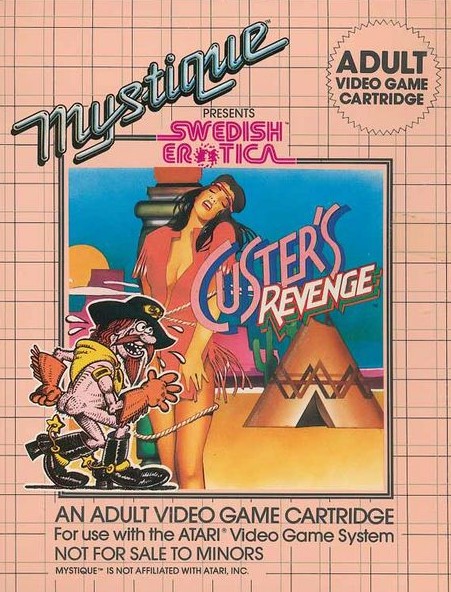By Paul Hiebert
What were your initial thoughts after seeing the music video for the first time?
The main concern I had was with the objectification and sexualization of a person depicted as a Native American woman. The whole tying her up and so forth, together with the provocative lyrics, is a timeworn trope. It made me think of a video game launched in the early ’80s by Atari called Custer’s Revenge. The object of the game is to navigate your character, which is General Custer, through a barrage of arrows as he makes his way toward a Native woman tied to a stake. The goal is for him to have forcible sex with the woman. I present this to my class in the context of a long, sad history of the sexualization of Native women, who face the highest rates of sexual violence of any discrete group of women in the entire US. I’ve written on this subject and had a piece published in The New York Times. So seeing Gwen Stefani tied up as a Native woman with lyrics that say, “Go ahead and look at me/Do you think I’m looking hot?” was just pretty revolting.
What other aspects of the video did you find disturbing?
Well, the video continues the tradition of popular media treating Native culture as if it’s part of the public domain, as if one can simply go into this reservoir of stereotypical images and draw from it without any kind of limitation or concern. When lands have been lost and cultures have been decimated, one of the last things left to be appropriated from Native cultures is their very dignity. And this is what videos like this do—they exhume and exploit and pull away whatever shreds of dignity may be left. It reflects our historical amnesia.
I know some people think this is overreacting and Native people are just whining again. But for those who find this a waste of time and don’t understand Native cultures as living, breathing, thinking societies that are worthy of people’s respect, it’s pretty hard to have a serious conversation about concerns such as the return of Native land. So if the attitude still exists that Native cultures don’t mean anything, don’t count, don’t deserve respect, it’ll translate into destructive action.
And I do give credit to No Doubt for their response. You don’t make a video like that on the cheap, so for them to yank it was a big deal. I applaud them for responding very promptly and thoughtfully, and basically saying: “Look, we did it, we made a mistake and we’re yanking it.” So kudos to them.

No Doubt's 'Looking Hot' Controversy: Does Anyone Win?
By Alicia Diaz Dennis
"There's a certain level of cultural borrowing that's okay, and natural, and going to happen no matter what, especially in the realm of art and music," Keene explains. She notes that some artists have incorporated aspects of indigenous cultures into their work respectfully: Earlier this year, Nelly Furtado featured Native hoop dancers Tony and Kevin Duncan (Mandan/Hidatsa/Arikara/San Carlos Apache) in her music video for "Big Hoops (The Bigger the Better)," for example. But this was different.
"It was them taking the images out of context and mashing together different stereotypes of Native people," Keene says. "The other issue was it implied violence against Native women, because Gwen's tied up for a lot of the video with two cowboys pointing guns at her. And because violence against Native American women is such an epidemic in the U.S., that's definitely not an image that you want to be promoting."
The implications of sexual violence were not lost on Angela R. Riley, the director of the American Indian Studies Center at UCLA, who posted a lengthy open letter to the band a few days after the video was taken down. In addition to noting that no one from UCLA had been consulted on the video, Riley pointed out some horrifying statistics about the violence American Indians face, including the fact that approximately one in three American Indian and Alaska Native women will be raped in their lifetimes.
Keene can't believe no one involved didn't realize what they were doing was wrong. "Not one person was vocal enough to say, 'Hey, we have a problem and we probably shouldn't be doing this,' that to me is amazing. Because you know it's not just the band and the director who come up with the concepts and put them into action."
Below: The cover of Custer's Revenge.


No comments:
Post a Comment